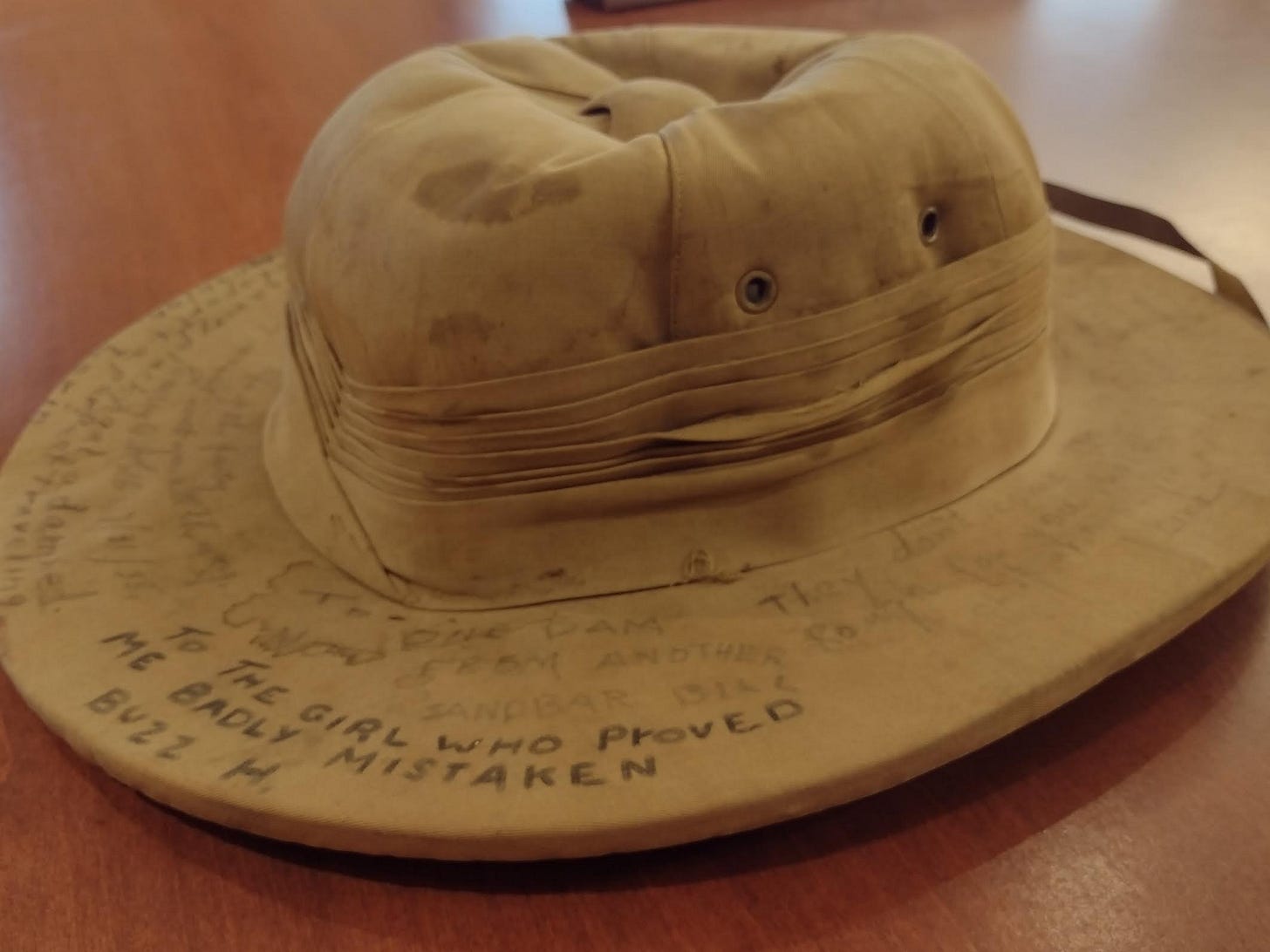Hello All,
Thanks for bearing with me as I took some time to get Sources Cited’s schedule in order, and to focus on my other, daily work. In that time I’ve locked our calendar—more or less—through the end of the year. I’m excited with the writers we have coming up. There’ll be looks at artist and writer Leonora Carrington, one reporter’s dilemma between readers and wartime censorship, and a portrait of a court jester, among others.
I also wanted to take a moment to express my gratitude to those writers who contributed to the first editions of the series. Sources Cited grew out of the inauspicious one-two punch of losing my teaching home for the past few years, where I spoke about research for creative writers, and the time-consuming nature of drafting my next book, which meant I had little time for criticism of the sort that might make up for losing the chance to talk about research in the classroom. I’m still working on the proper way and format to have this series represent a range of research topics and practices, as well as fine-tuning the questions to draw out stories, but these writers have started us off well.
If you’ve only recently joined us and haven’t yet looked through our past editions, here’s a selection. If you’d prefer to skip on, we’ll be back next Sunday with the next edition of the newsletter.
“So, what shocked me as I looked at this document was that this had never been mentioned in popular news sources: the Lilly family had made an appearance in the poetry world much earlier than 2004! Poor Hayden Carruth had come knocking at the Lilly family door in 1949. Sitting at my desk in the Manuscript Division, I shook my head as I read the letter—wondering what Carruth would have thought if he knew that five decades later, his requests for funding from the Lilly family would finally come through—in spades. It is an incredible irony because at the time the Lilly family denied his request, and a month after he wrote the letter, he was fired as the editor of Poetry.”
—Amy Paeth on the poetry wars and its philanthropic backers
“Around Christmastime in 2018 I visited the Special Collections at Northern Arizona University to see an exhibit of Grand Canyon photographs. There, on the wall, was a black-and-white photo of Jotter and Clover. The exhibit’s curator, Peter Runge, happened to walk by and I mentioned that I’d been thinking about writing something about the two women and their adventures. Peter told me to wait and disappeared into the archives. He returned with a cardboard box filled with pink bubble wrap. Inside the box was Lois Jotter’s hat—a stiff, yellow pith helmet that she wore during the 1938 river trip. Still legible round the brim of the hat were the faded signatures of her river companions, including a tantalizing note from Buzz Holmstrom, who had famously declared that women didn’t belong on the Colorado River.”
—Melissa L. Sevigny on a pith helmet and the two botanists who ran the Grand Canyon
“For instance, the Grimke brothers—Archie and Frank—are the two most well-known brothers, and yet they have a younger brother named John Grimke. And the Grimke family talked about him as being this failure. They don’t really talk about him much after he went to Lincoln University. And yet the Black press talked about him a lot in terms of his stumblings after: as a waiter, then as somebody who taught for a little while, and then as somebody who was this tragic failure. That allowed me to say that what the Grimkes were claiming about John didn’t match up to what was actually happening with him. And what did it mean that the public, the Black public, knew what was happening with John, or at least suspected, and the Grimke family denied that he existed?”
—Kerri K. Greenidge on the New York Age and the Grimkes
“At the time, I remember that the loss shook me as much as if I had known him, personally. I think I laid my head on my desk and cried for a man who I never knew; but through his writing, I felt like I knew him. In the end, I’m grateful for having met Dan. His writing enriched my understanding of his generation and the experience of getting to know him through it helped me realize that, yes, historians can get attached to their sources. I’ve hung on to this realization for a while now.”
—Jonathan Bratten on the Lewiston Evening Journal and one unit's World War I story
“I kept coming back to it, and its structure underlies the structure of my own book. It also gave me my subtitle, because it imagines the year as a kind of journey: the arrival of each month is described with verbs of active movement, so that months ‘glide’ or ‘travel’ or ‘slip swiftly’ into the world. In one way my book is just a very expanded version of what’s included in this short poem, and it has some of the same aims—to sketch a holistic picture of the cycle of the year, and to suggest that it’s worth paying attention to the everyday beauties of the seasons we live through but don’t always notice.”
—Eleanor Parker on a calendar-in-verse and an Anglo-Saxon year
Sources Cited will run through the end of the year, every other week (and will hopefully continue after that). As always, it remains free for anyone. However, if you’d like to support the work I do, a subscription is always appreciated. Additionally, if you have any ideas for the series, or ways it might be improved, I welcome you getting in touch.
—Adin




